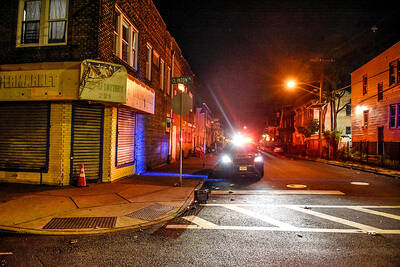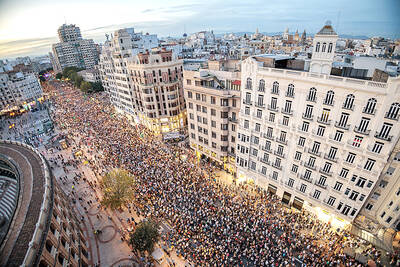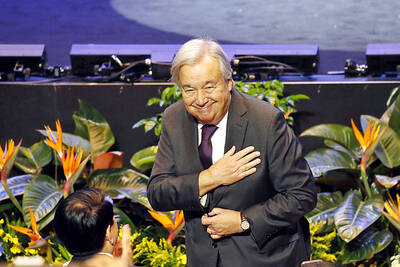Elizabeth Adak Shindu paid a high price to return home. She walked for 30 days, endured hunger and disease, and used her life savings. When she finally reached this sprawling, dusty town, she found another family living on her land.
Full of hope, thousands like Shindu have started making their way back to southern Sudan as Africa's longest running civil war ends. They are returning to a land of torched villages, farms riddled with land mines, ransacked schools -- and little help to begin anew.
More than 4 million people fled their homes during 21 years of fighting which left this vast region of grasslands, forests, mountains and swamps one of the poorest in the world. Some found sanctuary in neighboring countries, but most have been living in the government-held north where they make up the world's largest displaced population.
UN officials expect as many as 1.2 million people to return this year after the Arab Muslim-dominated government in Khartoum signed a peace deal with rebels fighting for more autonomy in the mostly African Christian and animist south. But the devastated towns and villages they left behind can't cope with an influx that size, warned Vincent Chordi, head of the UN refugee agency in southern Sudan.
"We know of places where 100 people arrive a day from the north," said UN humanitarian spokesman Ben Parker. "They miss home. They want to make an early start in getting their land, building their houses and reconnecting with their lives down here."
In a region lacking basic infrastructure, UN officials say it could take six to eight months to shift their relief effort from emergency aid to longer-term development to help rebuild the south. UN agencies have appealed for US$1.5 billion in funding for Sudan, most of it for the south.
In the meantime, the new arrivals cope as best they can.
Shindu was among an estimated 400,000 who returned last year, encouraged by progress during talks that resulted in the Jan. 9 peace deal, which provides for a national power-sharing government and autonomy in the south.
The tall, emaciated mother of nine now sits eating a handful of Marula kernels in front of her tiny grass hut in a makeshift camp built among thorny bushes and scattered palms in this town of 50,000 -- set to become the south's provisional capital. She survives, she says, by foraging for fruit, roots and leaves in the surrounding forests.
Life was slightly easier in the government-held town of Wau, 210km northeast of Rumbek, to which she fled 19 years ago when rebels attacked government troops here and killed her husband, a policeman. Shindu could make a living there washing dishes and clothes, and selling buckets of water.
Still, she says, it was worth the tortuous journey to return home.
"We had to walk for kilometers while carrying children on our backs; we had to walk for days while we were hungry; we had to sleep in the forest when we were very exhausted," Shindu said. "It was a test of our commitment to our native home -- and our faith in God."
Every step of the way, there was the fear of setting off one of the millions of land mines, unexploded grenades and shells scattered across the south.

DOUBLE-MURDER CASE: The officer told the dispatcher he would check the locations of the callers, but instead headed to a pizzeria, remaining there for about an hour A New Jersey officer has been charged with misconduct after prosecutors said he did not quickly respond to and properly investigate reports of a shooting that turned out to be a double murder, instead allegedly stopping at an ATM and pizzeria. Franklin Township Police Sergeant Kevin Bollaro was the on-duty officer on the evening of Aug. 1, when police received 911 calls reporting gunshots and screaming in Pittstown, about 96km from Manhattan in central New Jersey, Hunterdon County Prosecutor Renee Robeson’s office said. However, rather than responding immediately, prosecutors said GPS data and surveillance video showed Bollaro drove about 3km

Tens of thousands of people on Saturday took to the streets of Spain’s eastern city of Valencia to mark the first anniversary of floods that killed 229 people and to denounce the handling of the disaster. Demonstrators, many carrying photos of the victims, called on regional government head Carlos Mazon to resign over what they said was the slow response to one of Europe’s deadliest natural disasters in decades. “People are still really angry,” said Rosa Cerros, a 42-year-old government worker who took part with her husband and two young daughters. “Why weren’t people evacuated? Its incomprehensible,” she said. Mazon’s

‘MOTHER’ OF THAILAND: In her glamorous heyday in the 1960s, former Thai queen Sirikit mingled with US presidents and superstars such as Elvis Presley The year-long funeral ceremony of former Thai queen Sirikit started yesterday, with grieving royalists set to salute the procession bringing her body to lie in state at Bangkok’s Grand Palace. Members of the royal family are venerated in Thailand, treated by many as semi-divine figures, and lavished with glowing media coverage and gold-adorned portraits hanging in public spaces and private homes nationwide. Sirikit, the mother of Thai King Vajiralongkorn and widow of the nation’s longest-reigning monarch, died late on Friday at the age of 93. Black-and-white tributes to the royal matriarch are being beamed onto towering digital advertizing billboards, on

POWER ABUSE WORRY: Some people warned that the broad language of the treaty could lead to overreach by authorities and enable the repression of government critics Countries signed their first UN treaty targeting cybercrime in Hanoi yesterday, despite opposition from an unlikely band of tech companies and rights groups warning of expanded state surveillance. The new global legal framework aims to bolster international cooperation to fight digital crimes, from child pornography to transnational cyberscams and money laundering. More than 60 countries signed the declaration, which means it would go into force once ratified by those states. UN Secretary-General Antonio Guterres described the signing as an “important milestone,” and that it was “only the beginning.” “Every day, sophisticated scams destroy families, steal migrants and drain billions of dollars from our economy...